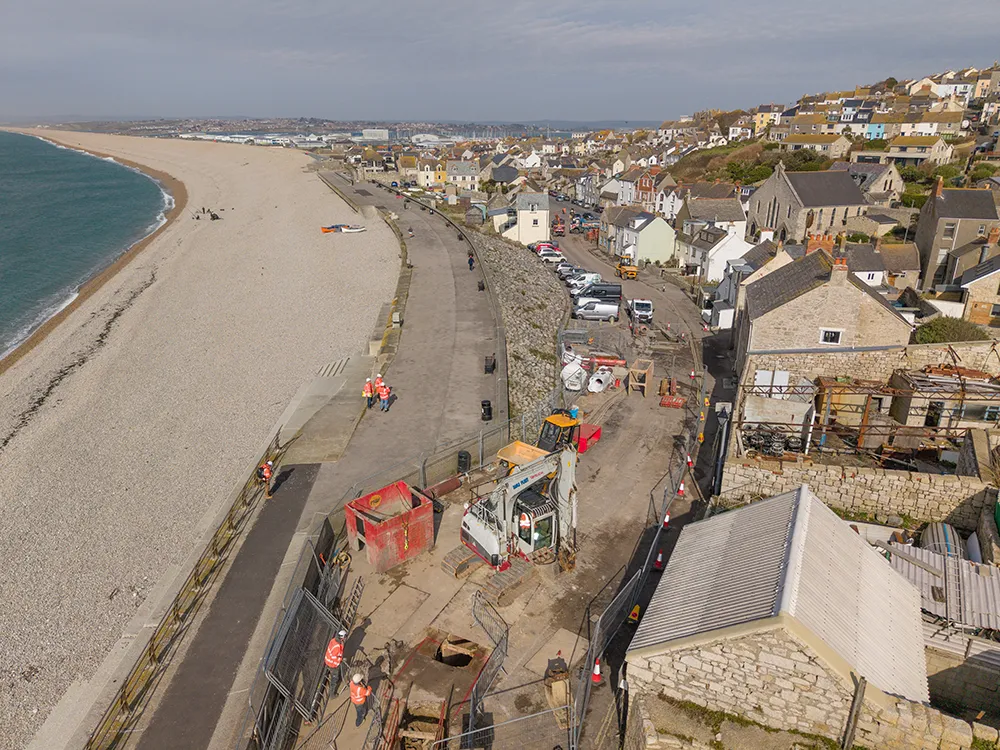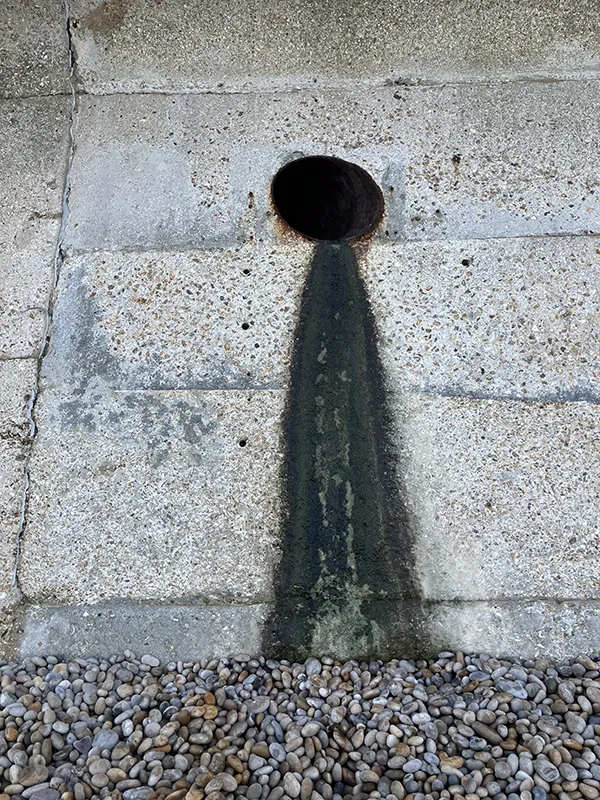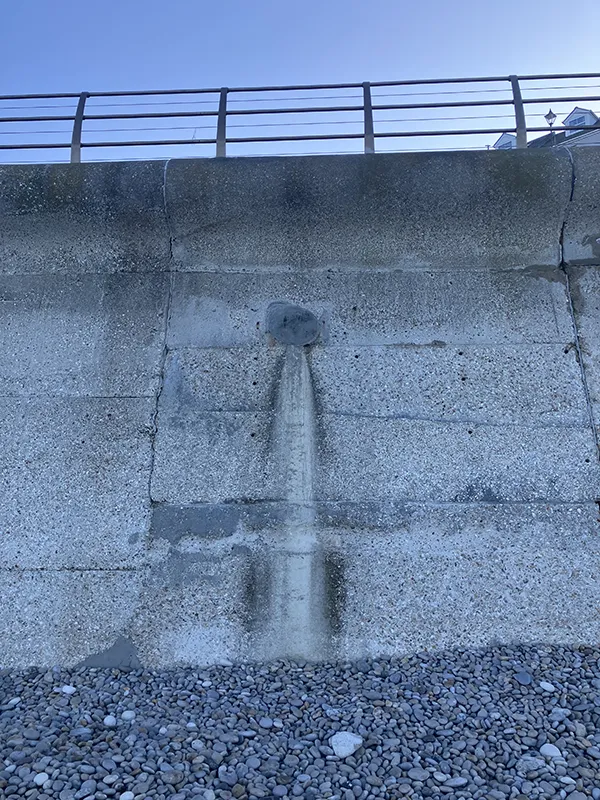- Home
- Our purpose
- Investment schemes
- Preventing discharges on Chesil Beach
Preventing discharges on Chesil Beach
Find out how we’ve invested £1 million to end the release of diluted untreated wastewater on an area of Dorset’s iconic seafront at Portland.
A historic issue
Storm overflows have always been a part of the sewer network in this country, operating automatically during heavy rainstorms to protect properties from flooding and prevent sewage from overflowing into streets and homes.
At the northern area of the Isle of Portland, on the eastern end of Chesil Beach, such an outfall was located within a section of the sea defence wall, that had been built as part of the Chesil Coast Protection Works back in the 1960s.
However, as part of our £3-million-a-month investment to progressively reduce and eliminate the discharge of untreated sewage, our planning and modelling saw us devise a project that could render the outfall obsolete – and add significant new capacity to the sewer network to handle local flows, without prolonging disruption for nearby customers.
What we did
Across 12 weeks from the start of 2025, Wessex Water teams, working with its sister engineering and construction firm YTL Construction, intercepted and abandoned the overflow pipe.
Simultaneously, the existing system was expanded to enable flows that carry a mix of rain and foul water to be redirected to a large-diameter sewer within nearby streets.
The extended network now ensures the water is safely piped onwards to a nearby water recycling centre for proper safe treatment and return to the environment.

Reducing the impact
Two teams worked concurrently in Chiswell and on Brandy Row in the Fortuneswell area of the isle to complete the project, with over-pumping helping to maintain local sewer services during the construction.
Careful scheme planning also meant we were able to avoid the use of temporary traffic lights that could have caused significant tailbacks up High Street in Portland, or any impact on the South West Coast Path, that runs along the Jurassic Coast.
Our project team also worked closely with customers and businesses in the area affected to maintain access to properties and ensure trade could continue and the work was completed on schedule.
If we can do it here, why not everywhere?
This was a specific local solution – and eliminating all overflows immediately would bring huge disruption to communities, significantly drive up water bills and force us to dig up huge numbers of roads at once, costing hundreds of millions of pounds.


However, our substantial investment has been committed to progressively reducing and eliminating the discharge of untreated sewage, starting with overflows that discharge most frequently and those that have any environmental impact.
This work is continuing over the coming years, with our plans for 2025-30 outlining a £580 million investment – more than double the 2020-25 figure – to reduce the operation of storm overflows, introduce more nature-based solutions and promote better rainwater management. Learn more about how we are tackling storm overflows.
We’ve asked the Competition and Markets Authority (CMA) to review how much we can invest in vital water and sewerage improvements over the next five years.
This comes after the industry regulator Ofwat’s final determination on our five-year business plan allowed for £4.2 billion of total expenditure – 17% short of what our calculations have shown are required to meet our obligations and your expectations, and support growth in the region.
What else have we done?
More than £500,000 was previously invested to protect the coastline around the historic Portland Bill Lighthouse from untreated wastewater in 2024. A separate pipe was installed to remove surface water from a potential 8,000m2 area from the combined sewer system and new storage space was constructed.
Further along the coast to the west, an £800,000 investment saw a new pipeline built to pump wastewater away from the villages of West Bexington and Swyre, helping to protect the beach on the UNESCO World Heritage Site coastline, as well as sewer renovation and surface water separation.
Our work to progressively and substantially reduce the discharge of untreated wastewater is continuing over the coming years too, with plans for 2025-30 outlining a £580 million investment – more than double the 2020-25 figure – to reduce the operation of storm overflows, introduce more nature-based solutions and promote better rainwater management.
